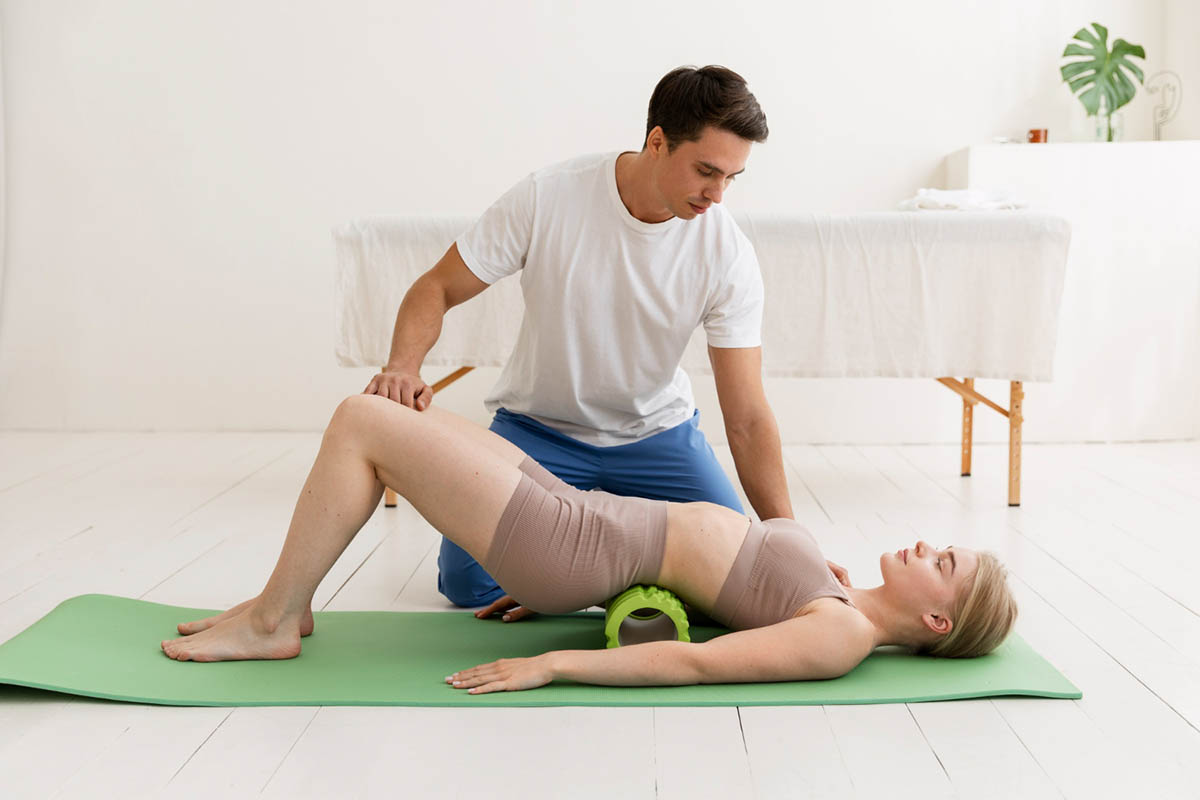Constipation is a common issue affecting millions of people worldwide, significantly impacting daily life and overall well-being. For many, the condition brings discomfort, frustration, and a persistent search for relief. Pelvic floor therapy has emerged as a promising solution, offering a non-invasive approach to alleviating constipation by addressing underlying pelvic floor dysfunction. This article will explore how pelvic floor therapy works, its benefits, effective exercises, and additional strategies to manage constipation.
What is Pelvic Floor Therapy?
Pelvic floor physical therapy for constipation focuses on the muscles, ligaments, and connective tissues that support the pelvic organs, including the bladder, rectum, and intestines. These muscles play a critical role in bowel movements, and dysfunction can lead to issues like constipation. Through targeted exercises, manual therapy, and biofeedback, pelvic floor therapy helps restore optimal function, improving strength and coordination.
How Does Pelvic Floor Dysfunction Cause Constipation?
Pelvic floor dysfunction occurs when the muscles in the pelvic region become too tight, weak, or uncoordinated. This can make it challenging to relax and contract the muscles needed for proper bowel movements. In some cases, people may strain excessively during bowel movements, worsening the problem and leading to complications like hemorrhoids or rectal prolapse.
Symptoms of Constipation
Understanding the symptoms of constipation can help you identify when pelvic floor therapy might be beneficial. Key symptoms include:
Straining
Difficulty passing stools often requires excessive effort, which can lead to additional pressure on the pelvic floor. Over time, this can contribute to muscle fatigue and exacerbate constipation.
Hard stools
Dry and hard stools can cause pain and discomfort during bowel movements. They may also lead to small tears in the rectal lining or hemorrhoids.
Infrequent bowel movements
Going less than three times a week is a common sign of constipation and can indicate sluggish bowel function. Prolonged infrequency can result in a buildup of stool, making it even harder to pass.
Feeling of not fully emptying bowels
A lingering sensation you still need to go, even after a bowel movement, is a common symptom of incomplete evacuation. This feeling can be caused by muscle dysfunction or rectal obstruction.
Abdominal discomfort
Bloating, cramping, or pain in the abdomen often accompanies constipation and results from trapped gas or stool. The discomfort may intensify as bowel movements become more irregular.
Rectal blockage
The feeling of a physical obstruction preventing stool passage can be due to tight pelvic floor muscles or a buildup of hard stool. This sensation can lead to increased straining, worsening the issue over time.
How Physical Therapy Can Help Relieve Constipation
Does pelvic floor therapy work for constipation? Absolutely. Pelvic floor therapy addresses the root cause of constipation by improving the function and coordination of the pelvic muscles. Physical therapy helps facilitate smoother and more effective bowel movements by targeting muscle imbalances and tension.
Benefits of Pelvic Floor Therapy for Constipation
Pelvic floor therapy provides a range of benefits that address the root causes of constipation. Enhancing muscle function and promoting proper coordination helps improve overall bowel health and relieve discomfort.
- Improved muscle coordination: Therapy trains the pelvic floor muscles to contract and relax effectively, facilitating smoother bowel movements.
- Reduced straining: Techniques taught in therapy help lessen the need for excessive effort during defecation.
- Alleviation of rectal blockage: Targeted exercises and manual techniques can help clear muscle tension and ease stool passage.
- Overall bowel function improvement: Patients often experience increased defecation frequency and better stool consistency.
About 4 million people in the United States experience frequent constipation, which accounts for 2.5 million doctor visits annually. Studies have shown that pelvic physical exercises significantly improve constipation, with 90% of patients reporting overall improvement, better defecation frequency, and reduced stool size.
Pelvic Floor Exercises for Constipation Relief

Pelvic floor exercises effectively target the muscles responsible for healthy bowel movements. They help reduce tension, improve muscle coordination, and promote smoother stool passage.
Kegel Exercises
Kegels involve contracting and relaxing the pelvic muscles to build strength and improve muscle control. Regular practice of Kegel exercises can enhance bowel movement efficiency and alleviate constipation symptoms.
- Sit or lie in a comfortable position.
- Squeeze the muscles you’d use to stop urination and hold for 3-5 seconds.
- Release and relax for an equal amount of time.
- Repeat 10-15 times, 2-3 times daily.
Squatting Exercises
Squatting encourages better alignment of the rectum, making it easier for stool to pass through the digestive tract. This position naturally relaxes the pelvic floor muscles, reducing strain during bowel movements.
- Stand with feet shoulder-width apart.
- Lower into a squat, keeping your back straight and thighs parallel to the floor.
- Hold for 10 seconds before returning to a standing position.
- Perform 10-12 reps daily.
Pelvic Tilts
Pelvic tilts help improve pelvic mobility by gently stretching and engaging the lower back and abdominal muscles. This exercise promotes muscle relaxation, aiding in smoother and more effective bowel movements.
- Lie on your back with your knees bent and feet flat on the floor.
- Gently tilt your pelvis upward by flattening your lower back against the ground.
- Hold for 5 seconds and return to the starting position.
- Repeat 10-15 times.
Other Tips to Relieve Constipation
While pelvic floor therapy is effective, combining it with these lifestyle changes can further support bowel health:
Increase Fluid Intake
Staying hydrated softens stool, making it easier for it to pass through the digestive system. Aim for 8-10 glasses of water daily to maintain optimal bowel health and prevent constipation.
Increase Fiber Intake
A fiber-rich diet of fruits, vegetables, and whole grains adds bulk to stool, promoting regular and easier bowel movements. Gradually increase your fiber intake to avoid discomforts such as gas and bloating.
Regular Exercise
Physical activity stimulates bowel movements by enhancing gut motility and promoting digestive health. For consistent relief from constipation, aim for at least 30 minutes of moderate exercise, such as walking or yoga, most days of the week.
When to See a Pelvic Floor Therapist

If constipation persists despite lifestyle changes and home remedies, it may be time to consult a pelvic floor therapist. Signs you should seek professional help include:
- Ongoing difficulty with bowel movements.
- Pain or discomfort in the pelvic region.
- Symptoms of pelvic floor dysfunction, such as urinary incontinence.
Pelvic health services, like those offered by Vitality Therapy & Performance, provide tailored treatment plans to address your specific needs. These services focus on assessing and addressing the root causes of pelvic floor dysfunction, ensuring personalized care that promotes long-term relief from constipation.
Their expert guidance ensures you receive targeted exercises and therapy to improve your bowel health effectively. By incorporating advanced techniques and evidence-based practices, Vitality Tulsa empowers patients to regain control over their pelvic floor muscles, enhancing overall quality of life.
Conclusion
Constipation can be frustrating and uncomfortable, but pelvic floor therapy offers a highly effective solution. Targeting the root cause—pelvic floor dysfunction—helps improve bowel movements and overall quality of life. Combining therapy with a healthy diet, proper hydration, and regular exercise can provide long-lasting relief. If you’re struggling with constipation, consider consulting a pelvic floor therapist to explore your options.
FAQs
Is constipation a symptom of a weak pelvic floor?
Yes, weak or dysfunctional pelvic floor muscles can contribute to constipation by making it difficult to coordinate the relaxation and contraction needed for effective bowel movements. This can lead to straining, incomplete evacuation, and other constipation-related issues.
Will pelvic floor therapy help with constipation?
Absolutely. Pelvic floor therapy targets the root causes of constipation by improving muscle strength, coordination, and relaxation, leading to more regular and comfortable bowel movements.
Which exercise is best for constipation?
Kegel exercises are particularly effective for strengthening the pelvic floor muscles and helping with bowel control and coordination. Additionally, squatting exercises improve rectal alignment for easier stool passage, while pelvic tilts enhance pelvic mobility and relaxation.

